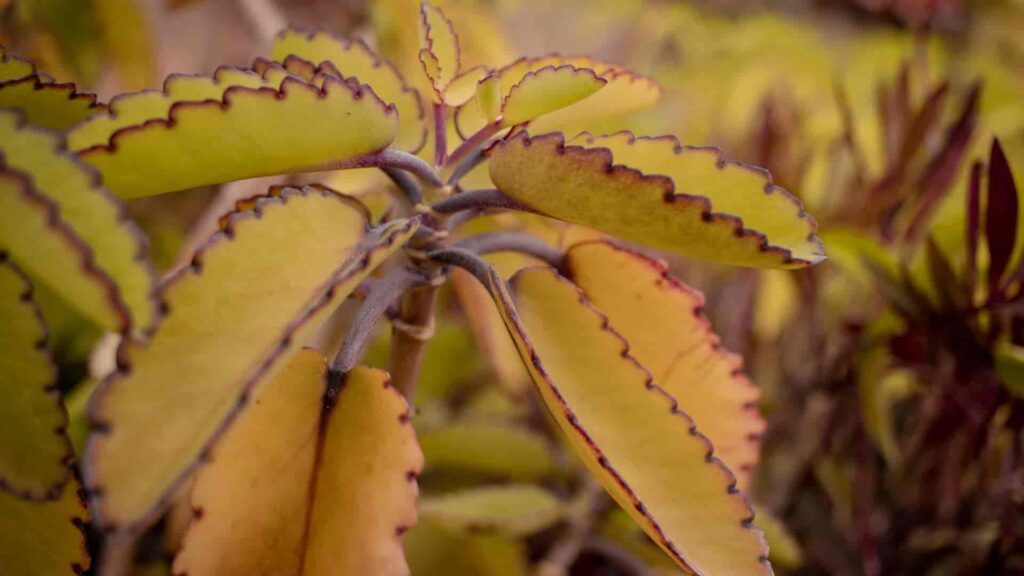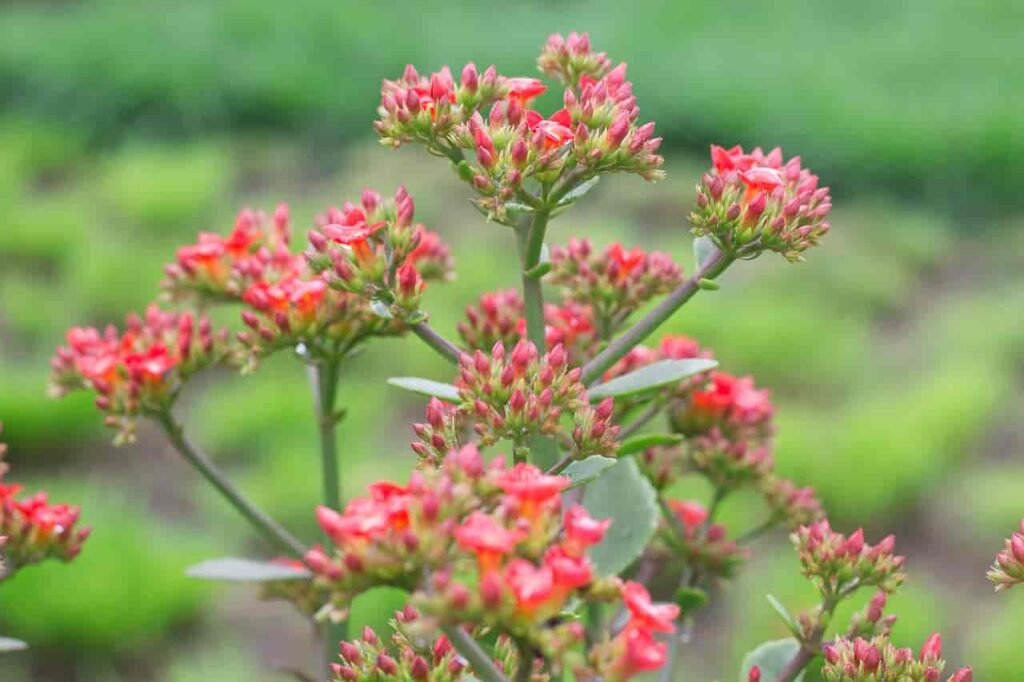Patharchatta (पत्थरचट्टा), also known as Kalanchoe Pinnata in English, is a popular plant known for its medicinal properties. It is a beautiful houseplant with many health benefits. In Ayurveda and Homeopathy, Patharchatta plant (Patharchatta ka Paudha) is considered a medicinal herb.
Because of the many uses of Patharchatta plant, you can find Kalanchoe Pinnata commonly growing in households especially in India. It is said that consuming 2 leaves of Patharchatta or Kalanchoe Pinnata will keep you safe from many diseases and infections. Patharchatta is like health insurance for you.
In Ayurveda, Patharchhata plant is used in the preparation of many ayurvedic medicines.
Patharchatta or Kalanchoe Pinnata is known by many common names like Air Plant, Mother of Thousands, Cathedral Bells, Life Plant, Magic Leaf, Miracle Leaf, Goethe Plant, Koppat, Ranapala, Parnbeej. In Ayurveda, it is also known by the names Bhashmpathri, Pashanbhed & PanPutty. It was formerly known as Bryophyllum pinnatum. In the Philippines, it is known as Katakataka (meaning remarkable).
Kalanchoe Pinnata is a succulent plant native to Madagascar. It is now adapted to tropical, subtropical & temperate regions around the world. Patharchatta needs a warm climate for optimum growth. They can be found growing on the sides of the rocks in tropical and deciduous forests. It is found abundantly in Asia, Australia, New Zealand, West Indies, Hawaii, Brazil, Philippines, etc.
In India, Patharchatta is grown in gardens and North-western hills, Deccan regions, and in Bengal.
Patharchhata can be visually distinguished easily as miniature plantlets develop along the borders of its leaves.
Contents
About Patharchatta Plant (Kalanchoe Pinnata)
Patharchatta has cylindrical stems which are quite fleshy. The new growth carries a reddish tinge to it (just like the mango leaves).
The term “Pinnata” in its name literally means winged owing to the shape and arrangement of the leaves on the stem.
The Patharchhata leaves are elliptical in shape, dark green, thick and fleshy. The plantlets developing at the margin/border of Patharchatta leaves fall off to the ground to produce new plants. The leaves are sour+salty in taste.
The natural property of this plant is neutral and hence it can be consumed in any season or time of the year.

Lifespan of Patharchatta Plant
Patharchatta is an evergreen perennial plant.
Temperature & Climate
Kalanchoe Pinnata grows well in warm regions. Like most tropical plants, it cannot tolerate heavy frost and hence should be grown indoors if you are living in a cold region.
In the tropics, this is grown as an outdoor garden plant. It spreads easily and hence is considered an invasive weed.
Patharchatta plant cannot survive in regions where the temperature is below 10°C (50°F).
Sunlight Requirements
Kalanchoe Pinnata grows really well in dry climates in full sun to partial sun conditions. Like many other succulents, you can keep them at a spot receiving direct bright sunlight. It grows very vigorously.
Best Soil to Grow Kalanchoe Pinnata
This plant loves well-drained soil and cannot stand in wet soil in which the roots of the plant will begin to rot.
They grow well in many types of soils only condition is they should not be waterlogged.
Succulent soil is good for growing this plant. Or you can use 40% garden soil, 50% sand and 10% compost to prepare the soil for this plant.
Height of Kalanchoe Pinnata (पत्थरचट्टा)
Patharchatta is a succulent plant growing to a height of about 1m or 3-5 ft.
Pot Selection
Preferably use a terracotta pot to grow this plant.
Patharchatta Flower (Kalanchoe Pinnata Flower)
Patharchatta flowers develop in clusters in the form of inflorescence. The flowers are like a pendant with a red-orange tinge to them as shown below:

The plant may lose leaves when in the flowering phase.
Propagation of Kalanchoe Pinnata or Patharchatta Plant
Always grow this plant alone in a single pot. The growth of this plant is vigorous and therefore other plants, if grown in the same pot, will struggle to get nutrition as Patharchhat will take over the entire pot for its growth.
In some regions such as Polynesia, it is considered a threat to biodiversity because of the invasive growth of this plant.
Patharchatta can be propagated from the plantlets growing on the margins of its leaves.
You can simply put the leaf of the plant in the soil and numerous plants will start growing from the soil.
Since one leaf has several plantlets growing on them which can be propagated, it is named Mother of Thousands.
It can also be propagated by sowing its seeds in the soil.
Watch this video to know more about propagating Kalanchoe Pinnata.
Fertilization of Kalanchoe Pinnata
This succulent does not need frequent application of fertilizers or manure to the soil. You can apply cow dung compost or vermicompost during the growing season ( February and September in India). You can apply liquid fertilizer one in 2-3 months.
Watering Kalanchoe Pinnata
Since Patharchatta is a succulent plant, it does not require frequent watering. Water only when the top 1-2 inches of soil is completely dry.
However, it is also not tolerant to extended drought conditions in which case the plant will start losing its foliage. Mature plants have greater drought tolerance.
This plant abundantly grows in humid and subhumid coastal areas (like that of Madagascar).
Patharchatta for Kidney Stone
In traditional medicine, patharchatta is considered a boon for the treatment of kidney stones or gallblader stones (up to a size of 10-15 mm). Consuming 2 leaves of Kalanchoe Pinnata with warm water empty stomach in the morning every day is believed to provide relief from kidney stones.
It is also said that consuming ginger powder mixed with patharchatta ras/ patharchatta juice/ patharchatta syrup can help relieve stomach ache.
Kalanchoe Pinnata has been used for many years in Ayurveda to treat urinary tract disorders.
Benefits of Patharchatta leaves
Kalanchoe Pinnata leaves are antibacterial, antiseptic, astringent. They are used as counter-irritant against poisonous insect bites.
Patharchatta leaves soaked in water are also used as a shampoo to cleanse hair.
Diseases of Patharchatta Plant
Kalanchoe Pinnata is susceptible to attacks by nematodes and a few species of insects. Use organic neem oil spray to keep the plant healthy.
Patharchatta Uses
There are numerous benefits of Patharchatta plant:
- Patharchatta leaves are used for the treatment of hypertension in some regions around the world.
- Patharchatta juice is used for the treatment of kidney stones in traditional medicine.
- In France, Kalanchoe Pinnata (called as zeb maltet in French) is locally used for the treatment of headache.
- It is a popular herb for the treatment of fevers.
- Paste of crushed leaves (4-5) of this plant can be applied to an infected area/wound/cut to alleviate pain and contain the spread of infection.
- Boil the leaves of Kalanchoe Pinnata in water and drink the water to treat vaginal infections.
- Patharchatta ras mixed with 1/2 teaspoon of cummin seed powder and 1/2 teaspoon of desi ghee consumed twice a day is beneficial in treatment of blood pressure and bloody diarrhea.
- It is considered beneficial for the treatment of piles.
You can read this article to know more about uses of Patharchatta plant.
Hope you enjoyed reading this article. If you like it, please hit the share button below.
If you would like to read more interesting articles, please read the following posts:
- Chilli Plant / Mirchi Plant Care: Information & Grow Guide
- Peepal Tree: Complete Information About Ficus Religiosa
- Lucky Plants For Home: 12 Best Plants To Keep in Your Home
- Camellia Japonica / Japanese Camellia: Plant Care Tips & Guide
- Tulsi Plant Care: How To Grow Tulsi Plant Faster






Leave a Reply